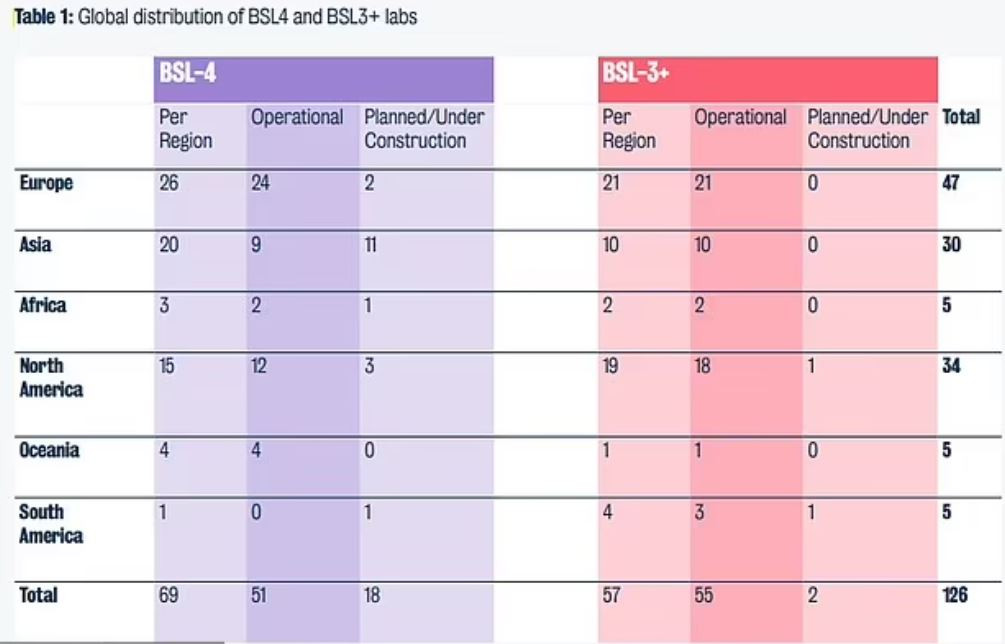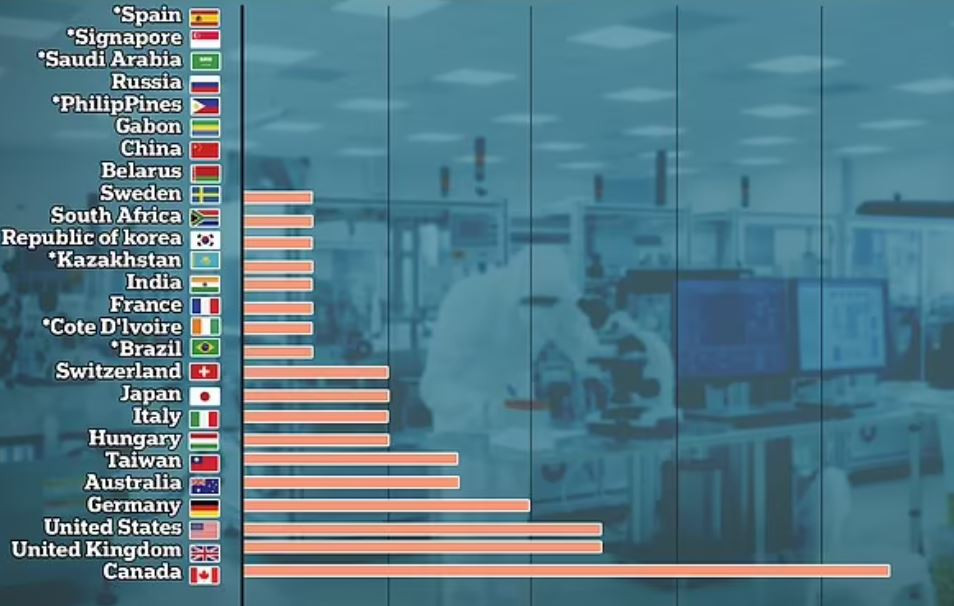More than 100 facilities tasked with maintaining and experimenting on viruses such as Ebola and bird flu now exist worldwide.
Global concern is caused by the rapid proliferation of laboratory facilities for the study and management of dangerous pathogenic organisms, as recorded in the world after the COVID 19 pandemic.
More than 100 facilities tasked with maintaining and experimenting on viruses such as Ebola and bird flu now exist worldwide.
But top scientists are concerned about the lack of oversight of labs, saying lax biosafety rules are a particular issue, notably in Asia.
A lab leak is also one of the leading theories about the origin of Covid, with China accused of covering up the possibility that the virus escaped from a high-security site in Wuhan, the city where the pandemic began.
The coalition of UK and US scientists behind today’s report claimed there are now 69 Biosafety Level (BSL) 4 facilities.
This is ten additional installations compared to two years ago.
Famous BSL-4 laboratories include Porton Down in the UK and the Wuhan Institute of Virology.
Experiments within these laboratories can include what some commentators consider to be profiteering, a highly controversial branch of science that seeks to manage pathogens.
Of today’s BSL-4 labs, about 75 percent are located in urban areas.
The report warns that this could “exacerbate” the potential impact of an accidental release with laboratories harboring pathogens such as smallpox, Ebola and Lassa fever.
Experts are now seriously concerned about the emergence of a new type of laboratory they call BSL-3+, with 57 such facilities identified around the world.
Most are in Europe, and 80% in urban areas.
These facilities conduct research on viruses such as bird flu without the stricter biosafety procedures of BSL-4 laboratories.
Additionally, as more BSL-3+ laboratories are located in densely populated urban environments, the risk of any potential pathogen spillover is increased.
Source :Skai
I have worked in the news industry for over 10 years. I have a vast amount of experience in covering health news. I am also an author at News Bulletin 247. I am highly experienced and knowledgeable in this field. I am a hard worker and always deliver quality work. I am a reliable source of information and always provide accurate information.












